GESTION INTEGREE DES RESSOURCES EN EAU ET OBJECTIFS DU MILLENAIRE POUR LE DEVELOPPEMENT EN AFRIQUE : Cas du Cameroun
Résumé : Le Cameroun, pays situé en bordure du golfe de Guinée entre 2° et 13° de latitude Nord et entre 9° et 16° de longitude Est
présente à l’image de nombreux pays en voie de développement de multiples problèmes liés à la gestion de ses ressources en eau.
En effet, de nombreux facteurs d’ordre politique, social, économique et environnemental entravent la bonne gestion de ces dernières.
Ces facteurs portent essentiellement sur l’immobilisme des acteurs en charge des questions de l’eau, le chevauchement des compétences, le manque des moyens financiers, l’approche sectorielle de la résolution des questions relatives à l’eau, la politique unilatérale du « haut vers le
bas », l’inefficience du concessionnaire principal de distribution d’eau potable, le contexte socio-politique marqué par une pseudo stabilité, le manque de capacités humaines, l’absence de textes appropriés et de structures adéquates. Les conséquences sont dramatiques
et affectent considérablement le processus de développement.
Ainsi, l’inéluctable raréfaction de l’eau, sa constante dégradation en qualité et son inégale répartition sont autant de signes palpables qui indiquent une mauvaise gestion de l’eau et concourent de façon significative à la paupérisation des populations en termes de santé, d’urbanisation, d’économie et d’échange.
Quelques initiatives d’acteurs bilatérales et multilatérales axées vers l’approvisionnement en eau, l’appui au programme d’irrigation, la
pêche, l’énergie, le tourisme, etc. viennent éclairer ce tableau sombre de la gestion de l’eau au Cameroun.
L’adhésion du Cameroun aux différents organismes de gestion des bassins (Autorité du Bassin du Niger, Commission du Bassin du Lac Tchad, Commission du Bassin du Congo) et la ratification des différents traités internationaux sur les questions relatives à l’eau constituent des atouts pour une amélioration du cadre national de la gestion intégrée des ressources en eau.
La nécessité de mettre en œuvre une stratégie de Gestion Intégrée des Ressources en Eau (GIRE) s’impose aujourd’hui au Cameroun.
La GIRE est un cadre stratégique très important dans le processus couplé de l’atteinte des Objectifs du Millénaire pour le Développement (OMD) et de la stratégie de développement durable telle que préconisée lors du Sommet Mondial sur le Développement Durable (SMDD) à Johannesburg en 2002.
Il incombe aux gouvernements de mettre sous programme cette stratégie car comme le disait en substance Kofi Anan les OMD doivent être atteints dans chacun des Etats membres, par les efforts des gouvernements et de la population.
Mots clés : Gestion Intégrée des Ressources en Eau (GIRE), Développement Durable, Objectifs du Millénaire pour le Développement
(OMD), pays en voie de développement, Cameroun.
Abstract : Cameroon which is situated at the gulf guinea between 2° and 13° at latitude North and between 9° and 16° at latitude East,
like many other developing countries, presents many problems attached to the management of water resources. In fact, several political,
social, economic and environmental factors hinder its effective management.
These factors deal particularly with the passivity of the actors in charge of water problems, an overlap of competences, the lack of financial means, the sectorial approach of solving problems related to water, the unilateral policy from “up to down”, the inefficiency of the main dealer of potable water distribution, the socio political context characterised by a pseudo-stability, the lack of human capacities and the lack of appropriate texts and adequate structures.
The consequences are extremely dramatic on the development process.
Thus, the inescapable scarcity of water, its constant quality degradation and inequal distribution are as much palpable signs which indicate a bad water management, and contribute in a significantly to the population impoverishment in terms of health, urbanisation economy and exchange.
Some bilateral and multilateral actors initiatives which are centered on water supply, the irrigation programme support, fishing, energy,
tourism, etc., throw light on the dark board of water management in Cameroon.
Adhesion of Cameroon to different organisations in charge of basins management (the Niger Basin Authority, the Lake Chad Basin Commission, the Congo Basin Commission) and the ratification of different international treaties on questions related to water constitute the advantages for improvement of the integrated water resources management within the national bounds.
An implementation of the strategy of Integrated Water Resources Management (IWRM) is imperative nowadays in Cameroon.
The IWRM is a strategic and important framework for a double targeted process concerning the Millenium Objectives for the Development (MOD) and the strategy of sustainable development as recommended during the World Summit on Sustainable Development (WSSD) in Johannesburg in 2002.
The government’s duty is to implement this strateg because the gist of what said Kofi Anan is that MOD should be reached in each state members thanks to the efforts of both governments and populations.
Keywords : Integrated Water Resources Management (IWRM), sustainable development, Millennium Objectives for Development
(MOD), developing countries, Cameroon.

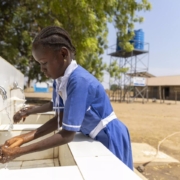 AFWASA
AFWASA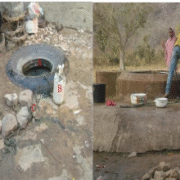 AAEA
AAEA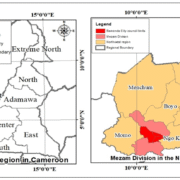 AFWASA
AFWASA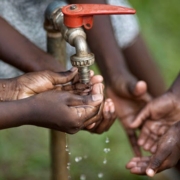 AFWASA
AFWASA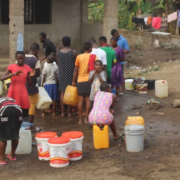 AFWASA
AFWASA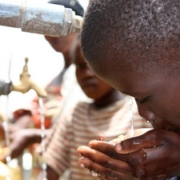 AAEA
AAEA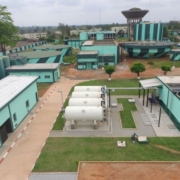 AAEA
AAEA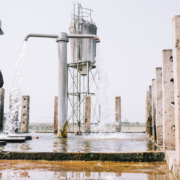 AAEA
AAEA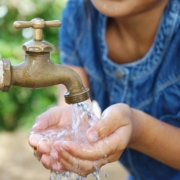 AAEA
AAEA AAEA
AAEA